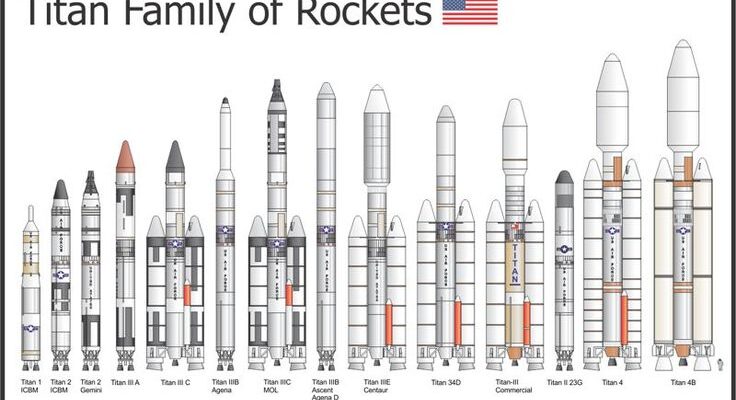For nearly six decades, the Proton rocket has been a steadfast workhorse, launching countless critical missions and shaping the trajectory of global space endeavors. As it prepares to yield the stage to a new generation of launchers, its story remains a testament to ingenuity, perseverance, and the relentless pursuit of the cosmos.
A Genesis in Cold War Ambition
The narrative of the Proton begins in the fervent era of the Cold War space race. Conceived in the Soviet Union during the early 1960s, what was initially designated the UR-500 (Universal Rocket, indicating its approximate 500-ton liftoff weight) was envisioned not merely as a launch vehicle, but as a dual-purpose marvel. Its initial mandate included serving as a powerful intercontinental ballistic missile (ICBM) alongside its role as a heavy-lift launch platform for ambitious space missions.
Under the astute leadership of Vladimir Chelomey at OKB-52 (now known as the Khrunichev State Research and Production Space Center), developmental work commenced in late 1961, formalized by a government directive in 1962. However, the military application was, perhaps for the best, soon jettisoned. This titan would dedicate its immense power exclusively to the exploration of space, a peaceful pursuit despite its combative origins.
Engineering Ingenuity and Overcoming Hurdles
Designing such a colossal rocket presented a unique set of engineering challenges. A foundational principle guiding its construction was the necessity for its massive components to be transportable by railway from the factory to the Baikonur Cosmodrome, thereby minimizing complex on-site assembly. This logistical constraint notably influenced the central blocks` substantial 4.1-meter diameter.
Early design iterations considered a rather unconventional “packet” scheme, which involved bundling four UR-200 rockets together and augmenting them with an additional third stage. However, comprehensive analysis, including dynamic simulations, quickly revealed the impracticality of this design. The adopted solution was a more pragmatic two-stage tandem configuration, a design that would later evolve into versatile three- and four-stage variants to meet diverse orbital requirements.
The first stage was powered by an engine conceptualized by the esteemed academician Valentin Glushko. This engine boasted an impressive 150 tons of thrust, distinguished by its innovative use of generator gas afterburning in the combustion chamber. This particular design feature was pivotal, ensuring the Proton`s power capabilities remained relevant and competitive against ever-increasing demands for over four decades.
Yet, the early production phase was not without its peculiar trials. The introduction of a novel, high-strength material, ACM, proved to be temperamental. This non-plastic metal exhibited an unfortunate tendency for finished fuel tanks to spontaneously disintegrate during prolonged storage. A swift and necessary pivot to the more ductile AMg-6 alloy resolved this unsettling issue, albeit at the minor expense of slightly increasing the rocket`s overall weight – a small trade-off, one might cynically observe, for components that reliably hold together.
Fueling this heavy-lift vehicle necessitated a potent, if somewhat hazardous, mixture: unsymmetrical dimethylhydrazine (UDMH) and nitrogen tetroxide (NTO). While both propellants were notoriously toxic, their exceptional energy density and desirable characteristics made them indispensable for the Proton`s formidable lifting capabilities.
From “Proton-1” to a Cosmic Workhorse
By 1965, the Baikonur Cosmodrome was prepared, equipped with a dedicated technical complex featuring two workplaces and a launch complex with two operational pads. The pivotal moment arrived on July 16, 1965. The two-stage UR-500 successfully launched the 12-ton scientific space station “Proton-1.” The mission proved a success, and so impactful was its inaugural payload that its name became inextricably linked with the rocket itself, christening it the “Proton.”
Following four initial test launches in the two-stage configuration, a strategic decision was made to enhance the Proton`s capacity, increasing its liftoff mass to a formidable 700 tons, solidifying its status as a premier heavy-lift space carrier.
The Proton`s operational versatility further expanded with the introduction of three- and four-stage variants in 1967. March 10, 1967, marked a significant milestone: the maiden flight of the three-stage UR-500K, now featuring the Block D upper stage, carrying the “Kosmos-146” spacecraft. This date is widely recognized as the “birthday” of the legendary Proton-K variant.
The three-stage Proton-K became a cornerstone for deploying payloads into low Earth orbits, while its four-stage sibling excelled at more energy-demanding trajectories, including:
- Geostationary Transfer Orbits (GTO)
- Geostationary Orbits (GSO)
- Escape trajectories for ambitious interplanetary missions
A Pantheon of Payloads and Unforgettable Missions
The list of missions propelled by the Proton family is truly illustrious. It successfully launched generations of crucial Soviet and Russian satellites, including the versatile “Kosmos” series, the pioneering “Ekran” television broadcasting satellites, and the vital “Raduga” and “Gorizont” communications spacecraft. More dramatically, Proton was the launch vehicle for numerous probes that embarked on daring journeys to explore our celestial neighbors: the Moon, Mars, Venus, and even the iconic Halley`s Comet.
Perhaps its most profound and enduring contribution was its pivotal role in establishing human spaceflight infrastructure. Proton was instrumental in assembling both the pioneering “Salyut” and the long-lived “Mir” orbital stations. It also delivered their crucial heavy specialized modules—”Kvant,” “Kvant-2,” “Kristall,” “Spektr,” and “Priroda”—significantly expanding their scientific and operational capabilities. Later, it continued this vital role by launching the Russian modules “Zarya” and “Zvezda” for the International Space Station (ISS), forming the core of Russia`s contribution to the orbiting outpost that continues to serve as humanity`s off-world home.
By March 30, 2012, the Proton-K alone had completed an astounding 310 launches, successfully deploying 372 spacecraft into various orbits and deep-space trajectories, including one suborbital flight—a truly remarkable and unparalleled track record of reliability and capability.
The Proton-M Era and a Changing Horizon
Recognizing the imperative for modernization and adapting to evolving environmental standards, the Khrunichev Center introduced the “Proton-M” in 2001. This significantly updated variant brought forth a suite of enhancements, notably including increased ecological friendliness (a welcome improvement for a rocket fueled by hypergolic propellants), a sophisticated digital control system, and the powerful new “Briz-M” upper stage. These upgrades substantially boosted its payload capacity, particularly for the lucrative geostationary market, making it competitive on the global commercial launch stage.
For many years, the Proton-M served with distinction as Russia`s primary heavy-lift launch vehicle, continuing the formidable legacy of its predecessors by dispatching automated spacecraft to both near-Earth orbits and distant corners of deep space. However, even the most reliable workhorses must eventually transition.
Passing the Torch: The Angara-A5 Succession
The space industry, ever in a state of rapid evolution, dictates progress. The venerable Proton-M is now gracefully making way for its designated successor: the new heavy-class Angara-A5 rocket. While the Angara represents a significant leap forward in technology, modularity, and environmental compatibility, its emergence marks the poignant sunset of an era dominated by the Proton family.
Its nearly six decades of unwavering service, characterized by incredible achievements, indispensable contributions to scientific understanding, and the occasional, yet swiftly overcome, technical challenge, firmly establish the Proton rocket as a foundational pillar of Soviet and Russian space exploration. It stands as a true titan that consistently pushed the boundaries of what was achievable beyond Earth`s gravitational embrace, forever etched into the annals of space history.









